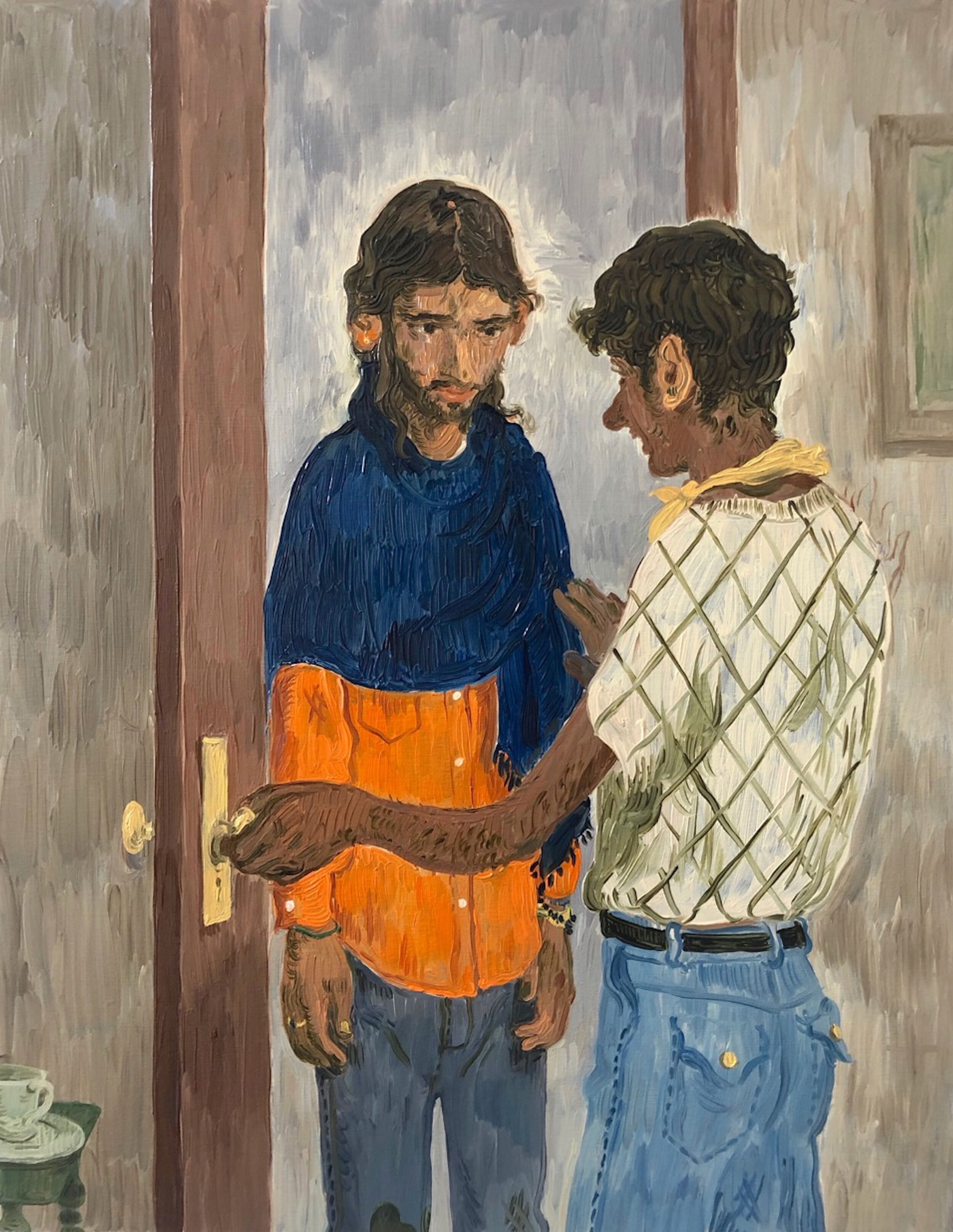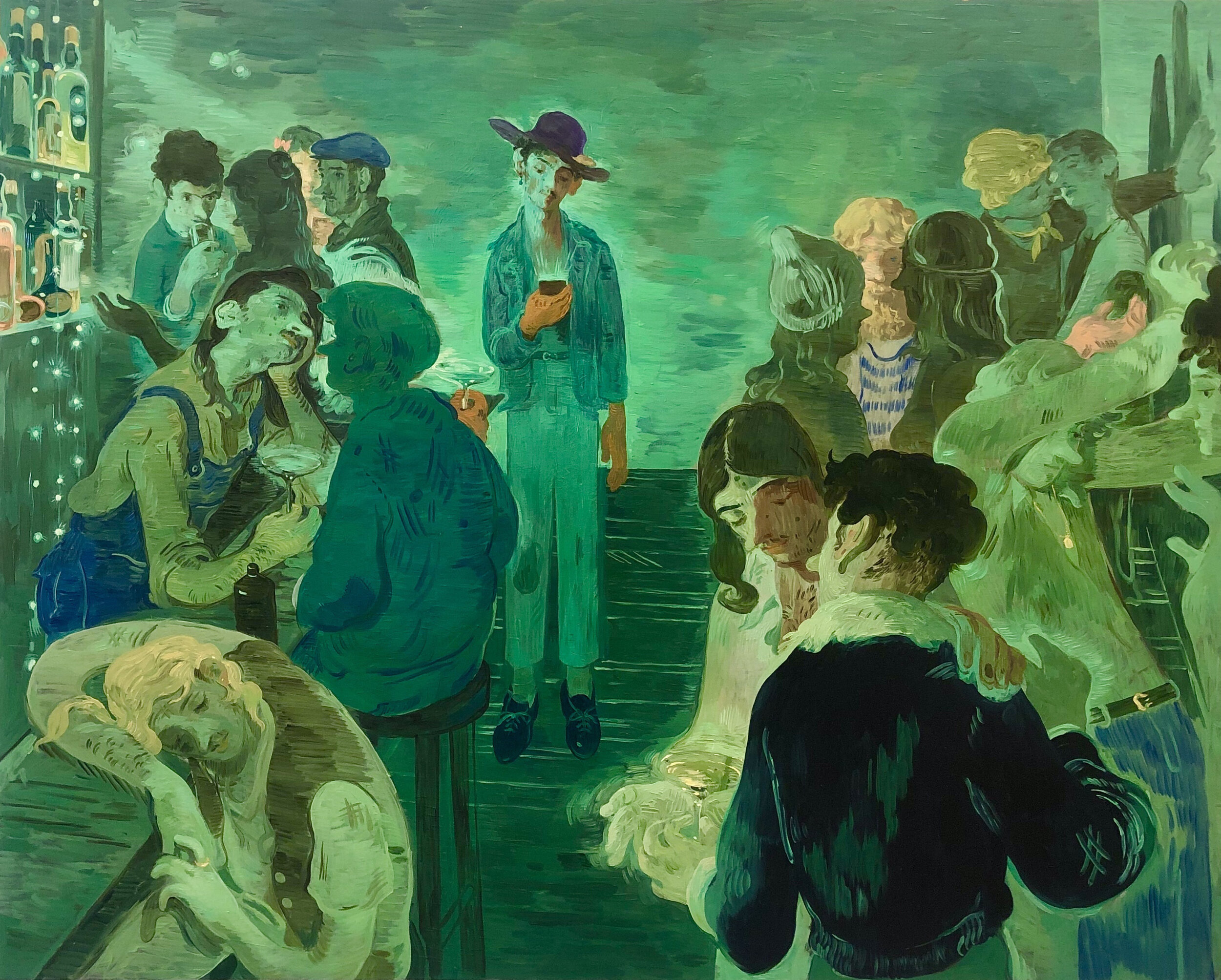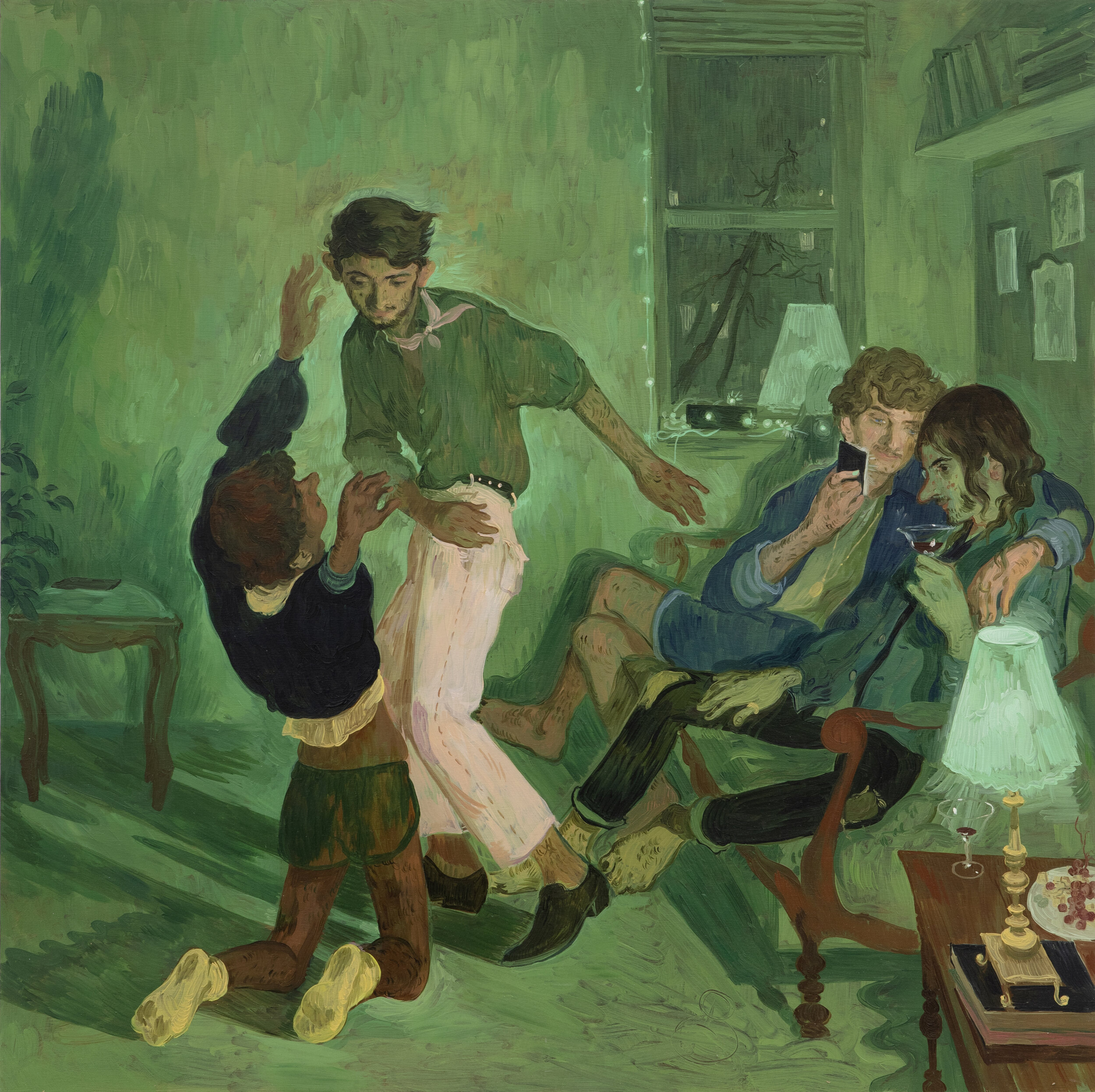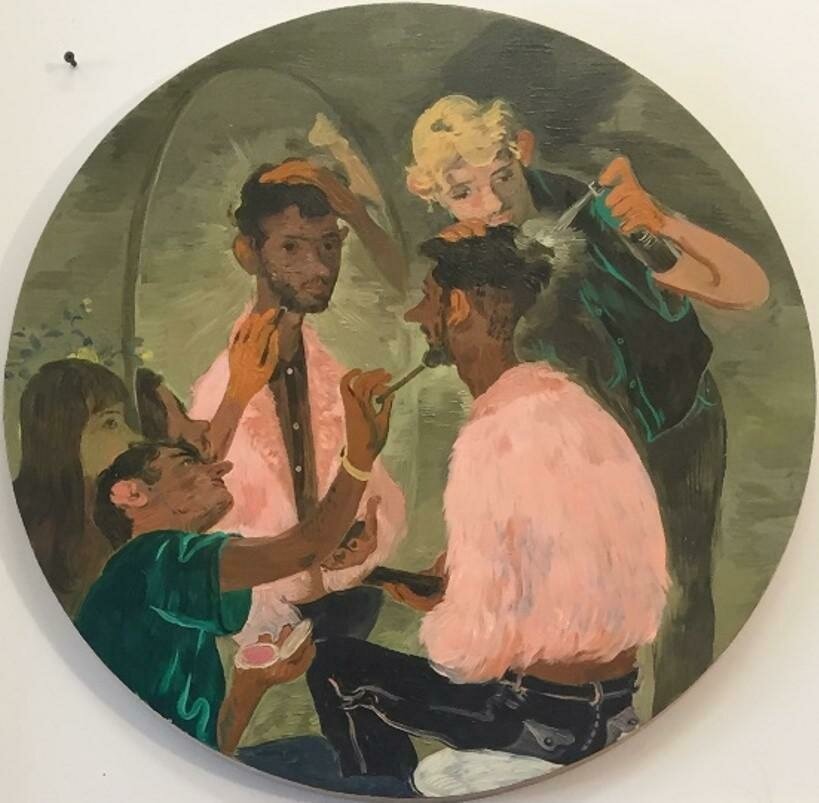Rediscovering Identity: How Will I Know?
In South Asia, flogging, imprisonment and death penalty await the LGBTQI+ community. The restrictions and suffocations of sacred texts and enforced laws threaten one’s right to sexual identity, allowing authorities and deities to possess agency over a personal property. To shed light on the democracy and individuality, Salman Toor looks inward to emit the everyday Queer lifestyle outward, a supple sense of antidote to the conservative thinking in South Asia.
In Lahore, Pakistan, Toor grew up in a household where his path in life had been dictated for him. Fourteen years after his birth, he revolted with art and drawing. He transferred to Ohio, the foundation to his knee-deep immersion in art as he studied Fine Arts at Ohio Wesleyan University for his bachelor’s degree and The Pratt Institute for his master’s degree. Throughout his studies and amongst newfound surroundings, Toor developed his penchant for Baroque, Rococo, Neoclassicism, and the methods of the European Old Masters. The leap between his then experimental phase in art and his contemporary creations lies in the infusion of immigration, social media, queerness, and solitude.
The Arrival, Salman Toor, Oil on plywood, 2019 © Salman Toor; Courtesy of the artist and Luhring Augustine, New York.
How Will I Know, his first solo show at the Whitney Museum of American art, running until 4th of April, embodies the transitions in life and society Toor has undergone, the pervading motif between liberation and restriction, and the impending transformation from tolerance to acceptance of the queer lifestyle in society.
Bar Boy by Salman Toor. Oil on plywood 2019 © Salman Toor; Courtesy of the artist and Luhring Augustine, New York.
Bar Boy. The protagonist comes into view, gazing at his brightly lit smartphone, the lamp in the dark-lit blue-green bar. To his left, three men evoke personal narratives. The first, in a trance, looks down at his nearly empty drink; the second places his chin on his palm, ceiling-gazing as he ignores the man in front of him; and the last dozes off on the bar’s counter, drunk and dazed. To his right, the sensual celebration springs: the four groups portraying four stories. The first man nears to his partner’s lips for a kiss; the second group forms a circle on the dancefloor to chat; the third man grooves on his own to the sound of jazz in the background; and the last couple, locked in each other’s arms, dances slowly to the rhythm.
Wistfulness lingers and drifts in The Star: a man in a fur-pink jacket sits before an oblong mirror, allowing his friend to touch up his face with makeup and his hair with hair spray, the indifference in their facial expressions affording contentment and freedom from the shackles of conservatives. After the preparation, Four Friends flaunt the festive gathering in an apartment. A couple dances in the living room while another pair sits on the sofa, looking at a smartphone with a glass of martini in one hand.
As the narration unfolds in The Arrival, the anticipation towards a bottled-up release, the catharsis of the bygone years, creeps from the canvas towards the audience, building a community of beliefs and forming a society of hopefuls and trailblazers. In the painting, a man opens his door to welcome another man in his despondent expression. Will he bask in the light of liberation? In Salman Toor’s How Will I Know, he already knows.
Words: Matthew Burgos




